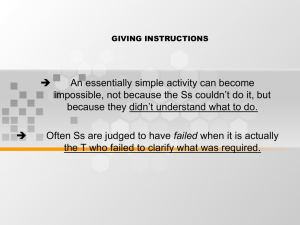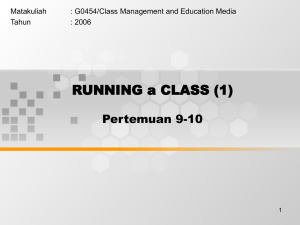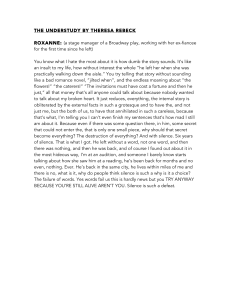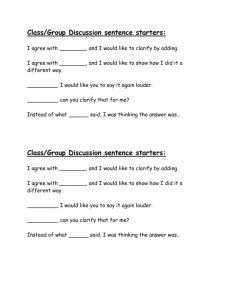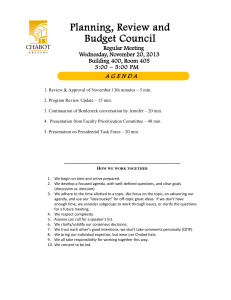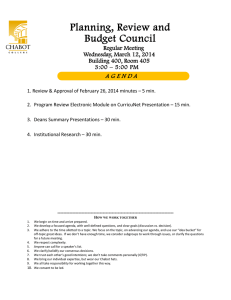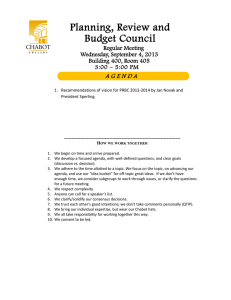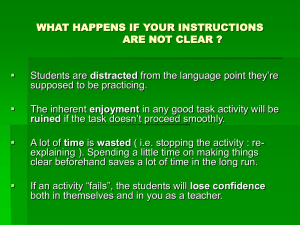GIVING INSTRUCTIONS
advertisement
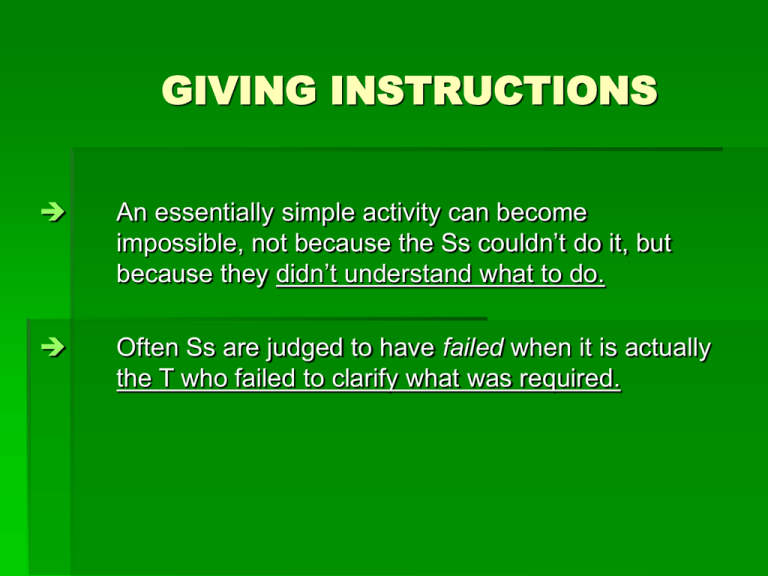
GIVING INSTRUCTIONS An essentially simple activity can become impossible, not because the Ss couldn’t do it, but because they didn’t understand what to do. Often Ss are judged to have failed when it is actually the T who failed to clarify what was required. STEPS TOWARDS BETTER INSTRUCTIONS 1. Become aware of your own instruction-giving ( listen to yourself; record yourself; ask others to watch you and give feedback ). 2. For a while, pre-plan instruction : Analyze the instruction beforehand so as to include only the essential information in simple, clear language. Sequence the information in a sensible order. Use short sentences – one sentence for each key piece of information. Don’t say things that are visible or obvious ( eg I’m giving you a piece of paper ). Don’t give instructions that they don’t need to know at this point. 3. In class, separate instruction clearly from the other chit-chat, telling off, joking, etc that goes on : Create a silence beforehand, Make eye contact with as many Ss as possible Find an authoritative tone, make sure they are listening before you start. Use silence and gestures to pace the instructions and clarify the meaning. 4. Demonstrate rather than explain wherever possible. 5. Check that they have understood what to do : Don’t assume that everyone will automatically understand what you have said, Get concrete evidence from the Ss that they know what to do. Getting one or two Ss to tell you what they are going to do is one very simple way of doing this.
